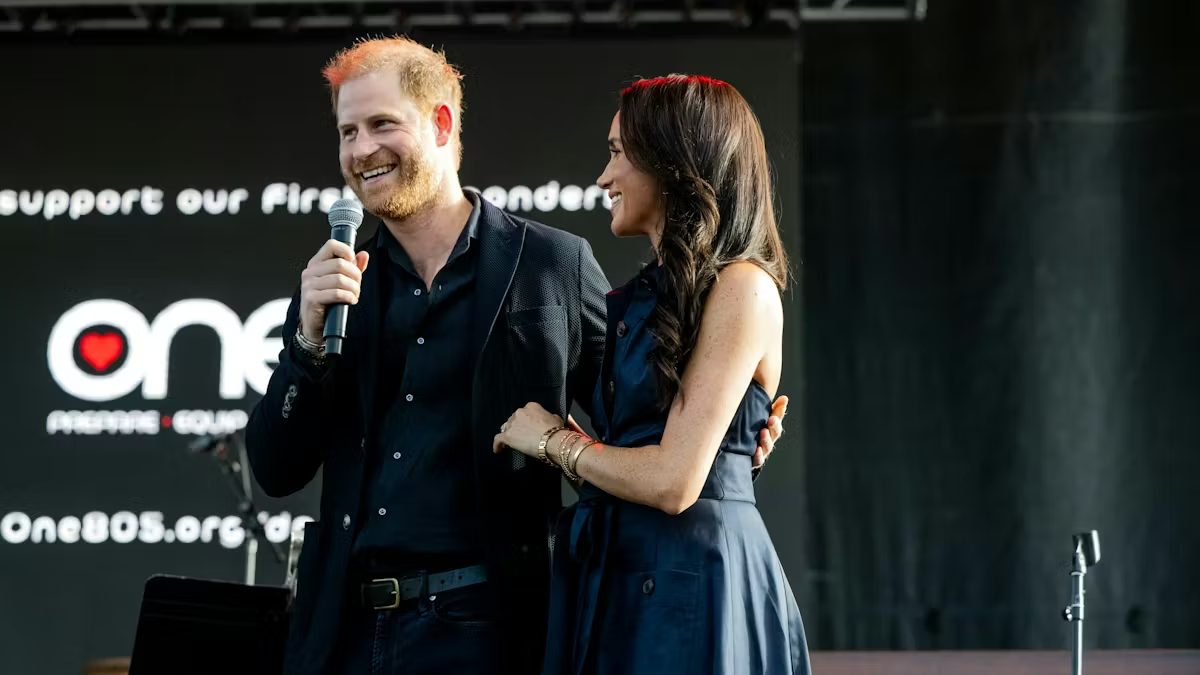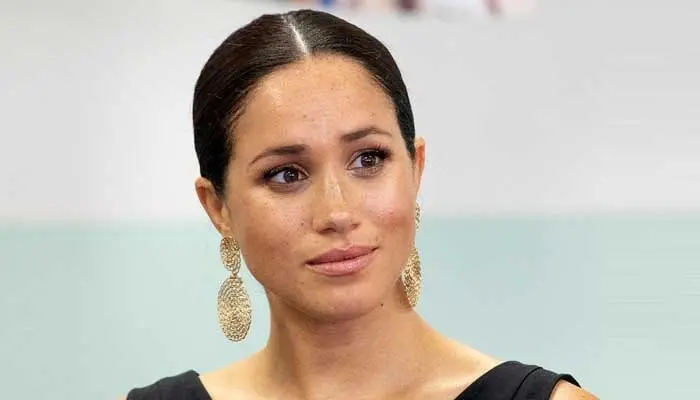Australia’s political and media landscape was thrown into turmoil after reports emerged that officials had firmly rejected Harry and Meghan’
s attempt to frame their private, self-funded trip as something resembling an unofficial royal tour.
The incident spread rapidly, igniting a storm of commentary, speculation,
and diplomatic curiosity across multiple continents within hours.

According to insiders familiar with the situation, the Sussexes allegedly requested HRH-style treatment, including ceremonial greetings and VIP protocols normally reserved strictly for working members of the British royal family. Their request, however, collided with Australia’s rigid protocol rules, which draw sharp lines around constitutional distinctions and official representation.

Officials reportedly responded with speed and clarity, asserting that only active, duty-performing royals qualify for such privileges. The Sussexes, having stepped back from those responsibilities years earlier, no longer met the criteria. Their request was therefore rejected outright, setting the stage for one of the year’s most unexpected international controversies.

The swift refusal generated intense interest across Australia, where debates about monarchy, celebrity influence, and national sovereignty often overlap. Public reactions varied, with some praising the government’s strict adherence to protocol and others questioning whether the couple had been treated too harshly given their global profile.
National newspapers featured front-page coverage of the event, describing it as a clash between tradition and celebrity branding. Commentators argued that the Sussexes’ attempt to elevate their visit reflected a broader pattern in which they navigate a complex hybrid identity, balancing personal independence with lingering royal associations.
As details continued to emerge, social media lit up with contrasting narratives. Supporters of the couple insisted the reports were exaggerated, claiming misinformation had been amplified for political purposes. Critics countered that the couple had repeatedly blurred boundaries between personal ventures and royal symbolism, leading to predictable conflict.
Diplomatic experts weighed in on the matter, clarifying that HRH privileges are not ceremonial decorations but legal statuses recognized by governments. Once relinquished, they cannot be selectively reclaimed or applied abroad. Australia’s refusal, they explained, was not emotional but procedural, rooted in long-standing protocol frameworks.
Observers noted that this incident added to the accumulating complexities in the Sussexes’ public journey. Since stepping back from royal duties, they have engaged in humanitarian initiatives, media ventures, and international appearances, prompting ongoing discussions about whether their actions resemble private advocacy or unofficial diplomacy.
In Britain, royal analysts examined the situation through the lens of family dynamics. Some suggested that the controversy would widen the existing distance between the Sussexes and the royal household. Others argued that the palace would likely maintain silence, allowing foreign governments to handle protocol matters independently.
Australian officials, meanwhile, maintained a firm emphasis on sovereignty. They asserted that ceremonial recognition is granted through formal channels, not individual preference. Whether the visitor is a celebrity, philanthropist, or former royal, protocol must be consistent to prevent confusion, favoritism, or unintended political implication.
Commentary programs across the country amplified the issue further, exploring the tension between public fascination with royalty and the responsibilities of governments to uphold constitutional clarity. The Sussexes, willingly or not, had once again found themselves at the center of an international debate about status and representation.
Some analysts argued that the couple’s global visibility creates ambiguous expectations. Their fame gives them access to high-profile platforms, yet their non-royal status restricts the ceremonial privileges they once held. This mismatch, they said, inevitably produces friction wherever they travel.
Supporters of the Sussexes highlighted their philanthropic work, emphasizing that their intentions were often misinterpreted or politicized. They believed the couple sought only logistical support and equitable treatment, not a resurrection of their former royal standing. The narrative battle played out fiercely online.
As the debate evolved, journalists investigated the broader implications for Commonwealth nations. Australia has long engaged in discussions about the monarchy’s role within its constitutional structure, and some commentators used the controversy to revisit questions about symbolic representation and national identity.
Tourism and diplomatic strategists also weighed in, noting that high-profile visits—official or not—always require careful handling. Misaligned expectations, they warned, can quickly escalate into controversy when public figures travel with multi-layered identities that governments must interpret, categorize, and sometimes decline.
Meanwhile, international media picked up the story, framing it as another chapter in the Sussexes’ complicated post-royal narrative. Global headlines highlighted the dramatic tone of the event, emphasizing both the decisiveness of Australian officials and the worldwide fascination with the couple’s actions.
Public opinion in Australia remained sharply divided. Some applauded the government for protecting national protocol and preventing potential misrepresentation of state-level hospitality. Others accused officials of overreacting, suggesting that a more flexible interpretation of procedure might have avoided unnecessary controversy.
Despite the uproar, Australian authorities stood firmly by their decision. They reiterated that private visitors—regardless of fame or former titles—are not eligible for diplomatic courtesies associated with sovereign or semi-sovereign representation. Consistency, they argued, is essential for preventing precedent-setting exceptions.
The controversy prompted broader conversations about the intersection of monarchy, celebrity culture, and global branding. As the Sussexes continue to redefine their international roles, governments and institutions must navigate the delicate balance between acknowledging their influence and enforcing strict protocol guidelines.
Analysts predicted that the episode could influence how the couple approach future international engagements. Clearer communication, they said, may be required to avoid misunderstanding, while governments may preemptively clarify expectations when hosting high-profile visitors with unique public identities.
In the end, the story became less about a single request and more about the evolving role of symbolic authority in modern society.
The clash in Australia underscored the complexity of navigating public identity after stepping away from inherited privilege, raising questions that will likely follow the Sussexes for years to come.
As the global conversation gradually settles, what remains is a vivid example of how protocol, perception, and personal branding can collide on the international stage.
The incident serves as a reminder that even private travel can spark international debates when the individuals involved inhabit a space between worlds—no longer royal, yet never entirely ordinary.